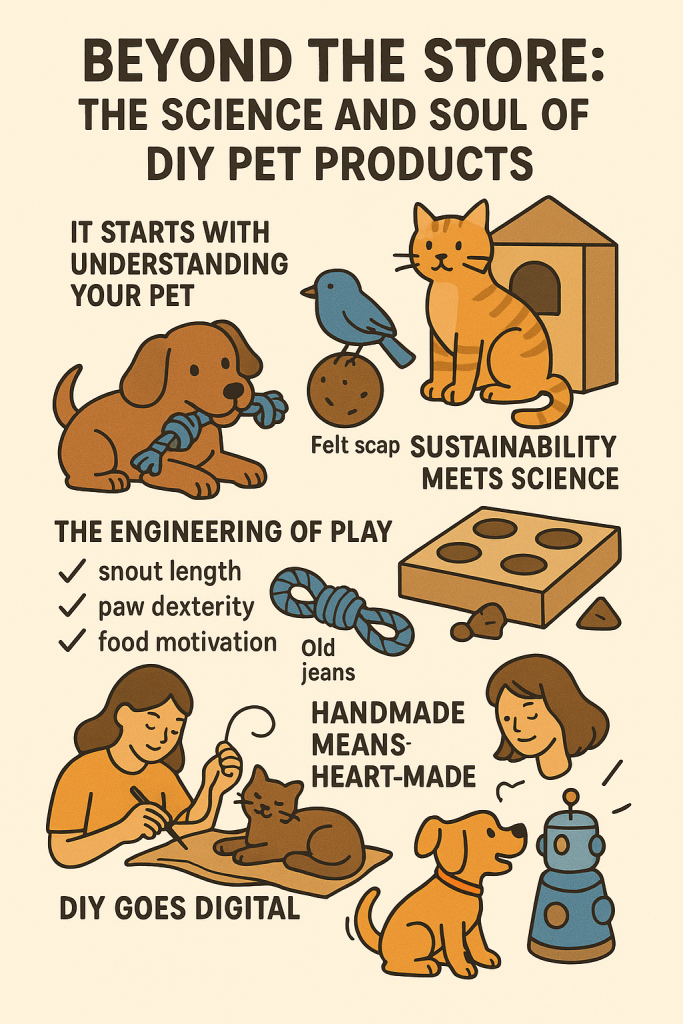In a world overflowing with mass-produced pet supplies, a quiet revolution is happening on kitchen tables, in garages, and across countless creative minds—DIY pet products. From hand-sewn dog jackets to custom cat puzzles made from cardboard, pet owners are tapping into science, sustainability, and emotional bonding through do-it-yourself creations. But DIY isn’t just a crafty trend—it’s a fascinating intersection of biology, psychology, and even engineering.
It Starts with Understanding Your Pet
Every successful DIY pet item begins not with fabric or glue, but with animal behavior science. Dogs chew not just for fun, but to relieve stress and stimulate their brains. Cats need vertical spaces and hiding spots to mimic hunting behavior. Knowing this, DIYers craft chew toys that double as stress relievers or build cardboard towers that mimic a cat’s natural jungle gym.

Sustainability Meets Science
Ever wondered what happens to a squeaky toy after your dog gets bored? Most end up in landfills. But DIY allows pet owners to upcycle everyday items—like old jeans into tug ropes or felt scraps into bird toys. Even better, you can control the materials used, avoiding harmful dyes or plastics.
Some enthusiasts go further, creating biodegradable litter alternatives from shredded newspaper and baking soda—backed by research into odor-neutralizing chemistry.
The Engineering of Play
DIY isn’t just glue and glitter—it’s pet-focused design thinking. A good puzzle feeder for dogs, for example, must take into account:
snout length
paw dexterity
food motivation
Pet parents are using everything from 3D printing to laser-cut wood to tailor toys specifically to their pet’s abilities and interests. Some even attach GoPros to pets to test prototypes from the animal’s point of view—a mix of empathy and tech.
Handmade Means Heart-Made
There’s growing evidence in human-animal bonding studies that tactile interaction and shared time reinforce attachment. When you sew a blanket or build a perch yourself, your scent, time, and intention are woven into the item. Pets may not consciously know this, but many respond more positively to familiar-smelling or handmade items—just like they prefer your worn hoodie over a store-bought dog bed.
DIY Goes Digital
With AI and smart tools becoming more accessible, some DIYers are programming treat-dispensing robots, smart collars, or interactive laser toys—built at home with open-source kits. This fusion of coding and animal cognition is making DIY pet tech a new frontier in both hobby and science.
Final Thought
DIY pet products aren’t just about saving money or being creative—they’re a form of science-based love. Whether you’re repurposing a cardboard box or designing a motion-activated feeder, you’re engaging deeply with your pet’s needs and your own ingenuity.
So next time your dog chews up a toy or your cat snubs a pricey bed, don’t head to the store. Head to your toolbox.
